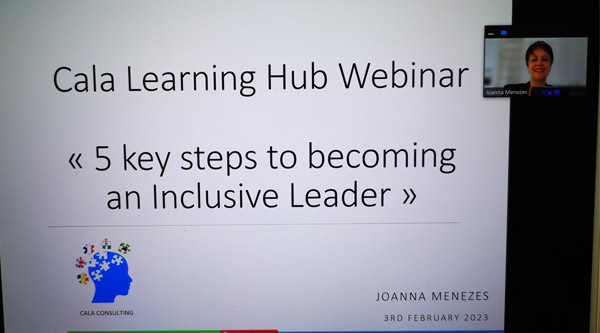Disagreements with your manager over working conditions, frustrations between team members, criticism and even manipulation... Conflicts in the workplace are unfortunately commonplace. So it was important to talk about them in our second webinar of the year, hosted by Pierre Nénert, professional coach and supervisor. Around 20 people from the Cala Learning Hub network, headed up by Joanna Menezes, participated in the discussions.
From hidden to open conflict
A conflict is simply an opposition between two or more people that can degenerate. It can be repressed and have the appearance of peace. It can be overt and expressed as irritation or anger. But it can also be recognised and well managed! The aim is to reach this stage of accepted conflict," explains Pierre Nénert. This is the role of leaders and HR managers in particular".
We usually observe 5 individual behaviours when faced with conflict, as described by Thomas-Kilmann: Turtle (tendency to avoid), Shark (tendency to compete), Fox (compromise), Teddy Bear (tendency to give in) and Owl (tendency to collaborate). Our conflicts are also linked to our own emotions and life stories. They are the result of conflicts between emotional polarities: between our sense of security and our individual freedom, between our desire to belong to the group and claiming our uniqueness, or between harmony and personal initiative.
What tools can be used to resolve conflicts?
Conflicts have different origins and are not all dealt with in the same way:
- The underlying structures are flawed, meaning that the organisation and rules are not clear. A framework and a degree of fairness need to be re-established.
- Experiences are belittled ("he didn't say hello to me", "he wants to take my job"...). In this case, it is important to understand each other and to establish communication and empathy.
- Interests are at odds (we don't want the same thing). Here, we rely on effective negotiation and creativity.
"Beware: compromise is only a potential fallback solution and is not necessarily a good solution," warns Pierre Nénert.
How can we prevent conflict?
There are several stages in the build-up to a conflict: warning signs (lack of communication, people avoiding each other, etc.), attitudes of disagreement that are often non-verbal (silence, etc.), heated discussions, then open conflict that can degenerate into frustration, unease or violence. Pierre's advice? "Deal with it as early as possible, identify a situation that is deteriorating and don't try to change people," he says. But in his view, the most important thing - and the most difficult - is "to take responsibility for yourself and let others take responsibility for themselves".
5 key steps to regulating conflict
- Establish a working framework, follow it and ensure it is respected: organise the sessions, establish rules and act as referee
- Listen to the protagonists individually to identify the exact sources of the conflict, the behavioural profiles, the current phase of the conflict, etc.
- Prepare the meeting between the protagonists: work beforehand on reminding them of the rules of interaction, on communication... In particular, avoid "poison words" ("you're useless"...) of judgement, critiscism, demands...
- Purge the belittled experiences: everyone in turn expresses themselves over the course of several sessions if necessary.
- Build an effective negotiation framework and find common ground based on everyone's interests.
And if you'd like to take part in our future webinars, take a look at the 2024 programme and sign up!

Blog article written by par Laure Blancard







 Copyright © 2016 - 2025 - Cala Consulting
Copyright © 2016 - 2025 - Cala Consulting